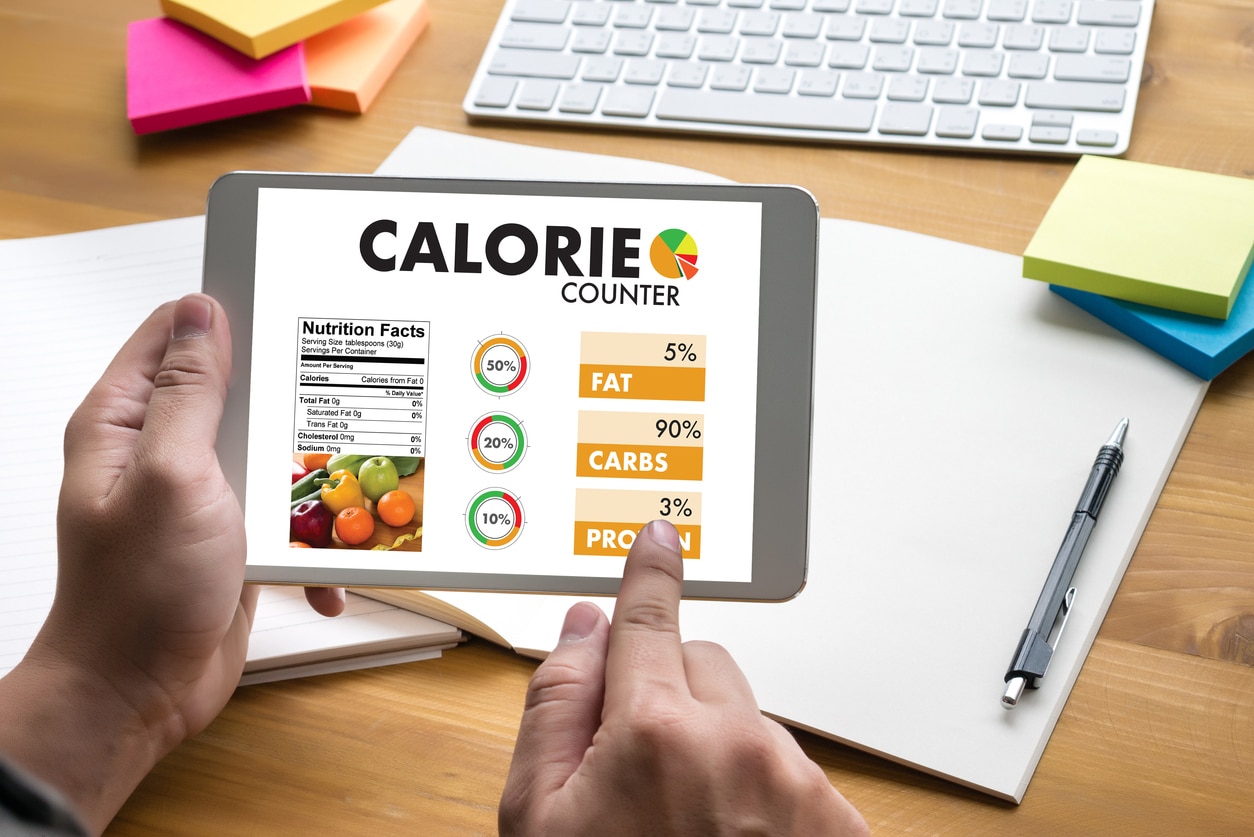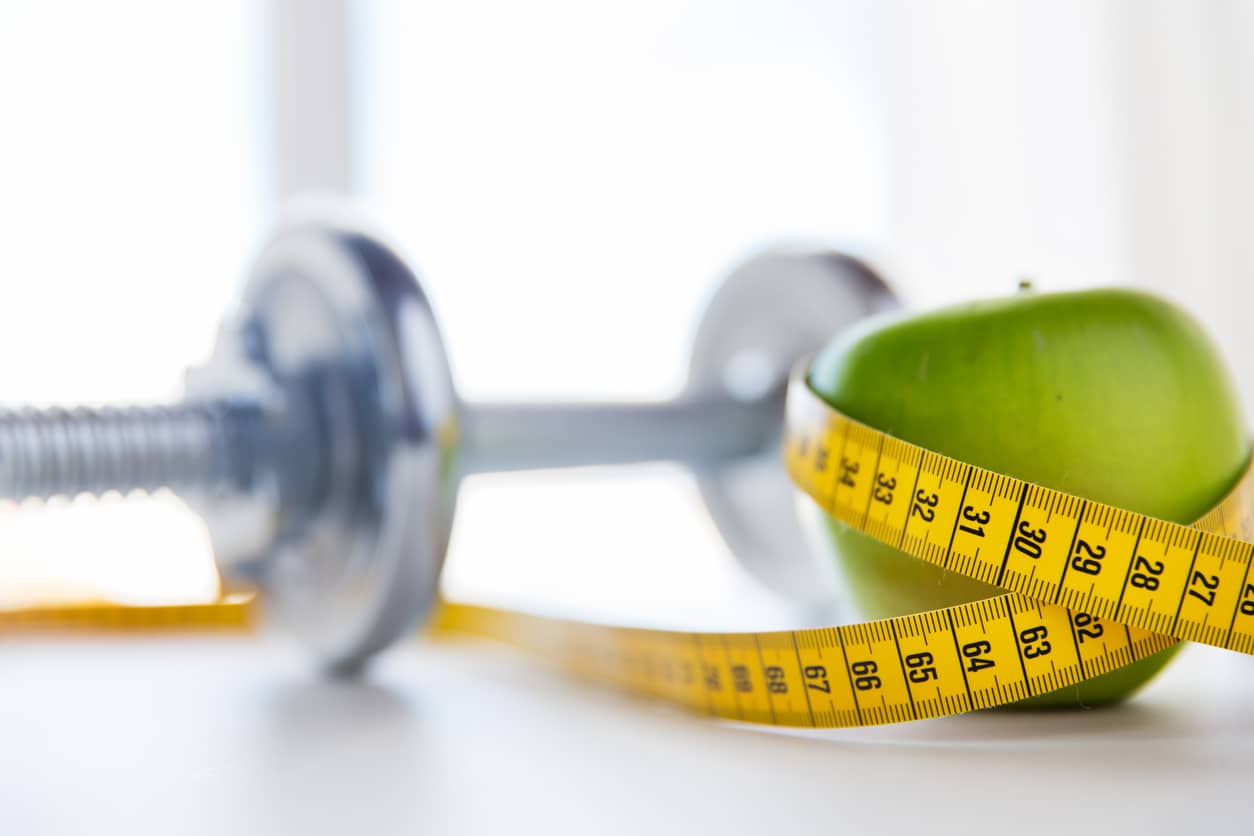Macros VS Calories: Which Should You Count For Weight Loss
If you’re trying to lose weight by way of what you eat, you’ve heard about macros VS calories. Click here to find out what they are and which ones to count.
The holidays are coming up in a hurry. That means reconnecting with family and friends, taking pictures, and maybe even paying a visit to your old hometown.
This is the time of year when many of us panic and say, “Oh no, I can’t enjoy the holidays looking like THIS!”
No matter what your weight loss motivation might be, it starts with getting educated. If you’re scouring the internet for weight loss tips, you’ve been hit by an avalanche and you need to sift through the myths and half-truths to find your path.
One of the greatest debates about weight loss is whether it’s best to count macros vs calories. We’re putting it to rest once and for all. Here’s what you need to know.
Counting Macros Vs Calories: What Do I Need to Do to Lose Weight?
We’ll cut to the chase: to lose weight the right way, you need to do both. Your body is an atmosphere with a delicate balance, and you need to manage your overall calories as well as your macros to stimulate healthy weight loss.
To help you find that perfect balance, we’ll break it down one piece at a time.
Why Calories Matter for Weight Loss
Most people know the basic concept of weight loss. If you take in more calories than you burn, you gain weight. If you burn more calories than you take in, you lose weight. But why?
A calorie is a unit of energy that your body uses for all its functions, from basic survival to hitting the pavement for a run. Our bodies are programmed for survival in the wilderness, where we wouldn’t know when our next meal was coming.
If we have more energy than our body needs, the body stores the extra energy inside our fat cells so it can use it at a later time if we can’t get the food we need. When your body needs more energy than you’re giving it, it pulls the energy from those stored fat cells and uses it, leading to weight loss.
To put it in simple terms, you need to burn more calories than you eat in order to lose weight. That’s why counting calories is the method most people use for weight loss: because it’s easy and it can get the job done.
However, your daily calorie count doesn’t give you the full picture. As we’ll explain later, not all sources of calories are equal.
How Many Calories Should I Eat to Lose Weight?
This is the million-dollar question: if I need to eat fewer calories to lose weight, what should my limit be? As you may expect, it varies from one person to another. Here’s how to calculate your calorie goal.
1. Find Your BMR
Everyone’s body requires a different number of calories for its basic functions like digestion, maintaining a heartbeat, and more. That number is your basal metabolic rate or BMR.
Your estimated BMR depends on your height, weight, age, and gender. You can use an online BMR calculator to find your estimated BMR.
As an example, let’s use Jane Doe. She’s a 40-year-old woman who’s 66 inches tall and she weighs 180 pounds. Based on an online calculator, her BMR is 1560. In other words, if she were to lay around all day and do no activity, she would burn 1,560 calories.
2. Factor in Your Activity Level
Now that you know your BMR, you need to factor in your typical activity level to see how many total calories your body burns on an average day.
Take a look at how much exercise you get in a typical week and assign it a number on a scale of 1.2 to 1.9. If you are sedentary and do little or no activity on a daily basis, you’re a 1.2. A 1.9, on the other hand, would be a professional athlete or someone who exercises often on top of a hard labor job.
When you’ve decided where your activity level is on this scale, multiply that number by your BMR. This is called the Harris Benedict Formula. It gives you an estimate of how many calories you need to eat on a daily basis.
Let’s go back to our Jane Doe example. She does a moderate workout three times per week, so we’ll put her at a 1.5 on the activity scale. If she multiplies that by her BMR of 1560, her total daily estimated calorie usage is 2,340.
3. Calculate Your Calorie Goal
The calculations above give you the number of calories you need to eat each day to maintain your same weight. The next step is to determine how many calories you should eat in order to lose weight.
It all depends on your desired weight loss rate. In general, you need to burn about 3500 more calories than you eat to lose one pound.
Let’s assume Jane Doe wants to lose two pounds per week. That means she needs a 7,000 calorie deficit each week.
To hit that goal, Jane Doe should eat 1,000 fewer calories than she burns each day. The puts her daily calorie limit at 1,340.
Of course, that’s only part of the story. To get the results she wants, Jane Doe needs to make sure those 1,340 calories are coming from the right sources. That’s where macronutrients come into play in our nine-week weight loss challenge.
Why Macronutrients Matter for Weight Loss
Food does more than give your body energy. It also gives your body the specific nutrients it needs to perform every function you need on a daily basis. That’s why your macros are so important: they make sure your body has what it needs to function.
There are three macronutrients: carbohydrates, proteins, and fats. Each one has its own nutrients and components your body needs. The key to weight loss is making sure that your body gets enough of each macronutrient within your daily calorie goal.
Carbohydrates
Carbs have gotten a bad reputation over the years, and it’s only somewhat warranted.
Carbs are your body’s first source of energy. If you take in more carbs than your body needs, it stores the remaining carbs in your fat cells, enlarging them and causing weight gain.
If your body needs more energy than it’s getting from the carbs you’re eating, it pulls stored energy from your fat cells and you lose weight. That’s why low-carb diets are so popular. They cut to the chase and stimulate fast weight loss.
Proteins
The second key macro is protein. In the same way that people vilify carbs, they glorify protein.
They aren’t all wrong. Protein is made of amino acids, which are the building blocks for all your cells. They’re essential to healthy body functions.
Proteins are also necessary for your body to build muscle. The way you build muscle is that when you exercise, the effort creates tiny micro-tears in the muscle fibers. When your body repairs those tears with materials from protein, it makes the muscles stronger.
That brings up an important misconception: protein itself doesn’t make you build muscle and get fit. It gives your body what it needs to build muscle as a result of your exercise. You still need to work out to gain muscle.
Fats
Fat has become a dirty word, but thanks to more and more nutritional education, we’re changing that misconception. Dietary fat isn’t the same as fat in your body. If you stop eating fat, it doesn’t mean your body will burn your fat cells to replace it.
Dietary fat is your body’s second source of energy after it has depleted the carbs and before it starts burning stored energy. Fat is also a vital part of your diet because it includes nutrients your body needs to operate at its best.
The key is choosing healthy fats, like avocado and eggs instead of high-fat sweets.
How to Balance Your Macros for Weight Loss
Now you know the three macros you need each day, but how much of each one do you need?
In general, you should aim to get 40% of your daily calories from carbs, 40% from proteins, and 20% from fat.
While that sounds simple, it takes some calculation. Let’s use Jane Doe as our example. Her daily goal is 1,340 calories. That means she should get 536 calories from carbs, 536 from proteins, and 268 from fats each day.
The problem is that nutrition labels list the grams of each macro in your food, not the calories. That’s another calculation you have to do.
Each gram of carbs and proteins contains about four calories. Each gram of fat contains about nine calories. That means Jane Doe needs to eat 134 grams of carbs, 134 grams of protein, and 30 grams of fat every day.
Keep in mind that this is all based on a general weight loss goal. Depending on your specific goals, a nutritionist might suggest changing these ratios. For instance, someone who wants to build muscle while they lose weight might need more protein.
Tips for Losing Weight While Counting Calories and Macros
It’s not about choosing between counting calories or balancing your macros. You need both to lose weight while staying healthy. You might be able to lose weight without considering your macros, but you could compromise your health.
Your results also won’t be the same if you don’t keep your macros in line. If you’ve ever wondered why some people who lose weight end up toned while others don’t, the macros are a common reason.
If you’re ready to get started, here are some tips:
1. Work the Numbers
Considering how much of this blog is dedicated to math, you can see how important numbers are in getting your diet right. People who say, “I’m just going to estimate how healthy things are,” rarely reach their goals.
It’s also important to re-work your numbers every so often. As you lose weight, your BMR will change and your activity levels might change too. Re-do your calculations and your goals every month or two depending on your progress.
2. Keep It As a Work in Progress
You need to recognize that these numbers aren’t an exact science. Everyone’s body is unique in the ways and rates at which it processes calories.
Studies even show that the numbers vary based on ethnicity and weight history. Monitor your progress and don’t be afraid to adjust your goals and percentages if necessary.
As you do this, pay attention to more than the scale. Do you feel run-down all the time? Are you too weak to work out? If so, it’s time for an adjustment.
3. Use Water for All It’s Worth
To be blunt, drinking water helps you lose weight. It’s a well-known fact in the medical community, but not all dieters recognize it.
Hydration helps you have the energy to work out and stay active. In some cases, people think they’re hungry when they’re actually thirsty. If you drink water when you feel hungry, it could prevent you from eating more than you need.
In many cases, people who drink water soon before a meal also eat less food. It’s a great technique to try if you tend to overeat or if you leave the table still feeling hungry.
4. Planning, Planning, and More Planning
Chances are that on-the-fly decisions have landed you in a position to want to lose weight in the first place. It’s impossible to estimate the calories in a dish if you don’t know how it was prepared.
Hitting your calorie and macro goals require planning ahead. Plan your meals in advance to get the balance you need. If you plan to go to a restaurant, look up the nutritional information if possible and plan your meal ahead of time, based on the numbers.
5. Don’t Try to Go It Alone
This one’s crucial. Study after study has shown that people who lose weight with a partner, coach, or buddy are more successful. Look to a professional like our weight loss coaches for knowledgeable guidance and emotional support.
Losing Weight With a Plan
For most people, weight loss isn’t a “wing it” type of task. In many cases, we aren’t aware of how unhealthy our food choices are until we look at the calorie content and the macros they contain.
The key is planning ahead. Medical researchers have learned so much about macros vs calories, the way our bodies work, and what causes weight loss. The information above can help you take advantage of it.
If you’re ready to get started and begin working toward your best body today, our 21 Day Body Transformation Challenge combines diet and exercise to transform your look. If you want to turn heads for the right reasons, find out more here.













Recent Comments